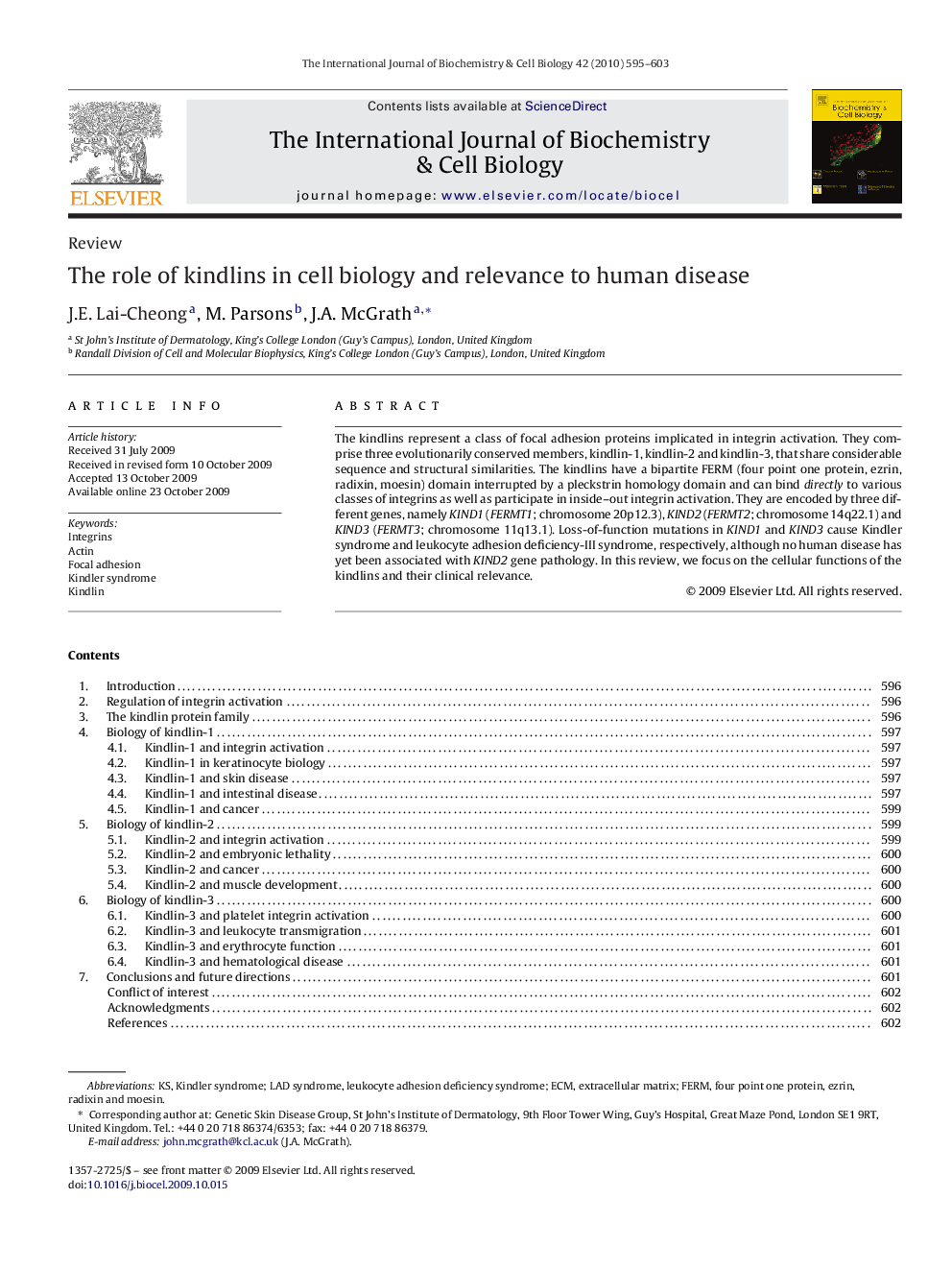| کد مقاله | کد نشریه | سال انتشار | مقاله انگلیسی | نسخه تمام متن |
|---|---|---|---|---|
| 1984479 | 1539942 | 2010 | 9 صفحه PDF | دانلود رایگان |

The kindlins represent a class of focal adhesion proteins implicated in integrin activation. They comprise three evolutionarily conserved members, kindlin-1, kindlin-2 and kindlin-3, that share considerable sequence and structural similarities. The kindlins have a bipartite FERM (four point one protein, ezrin, radixin, moesin) domain interrupted by a pleckstrin homology domain and can bind directly to various classes of integrins as well as participate in inside–out integrin activation. They are encoded by three different genes, namely KIND1 (FERMT1; chromosome 20p12.3), KIND2 (FERMT2; chromosome 14q22.1) and KIND3 (FERMT3; chromosome 11q13.1). Loss-of-function mutations in KIND1 and KIND3 cause Kindler syndrome and leukocyte adhesion deficiency-III syndrome, respectively, although no human disease has yet been associated with KIND2 gene pathology. In this review, we focus on the cellular functions of the kindlins and their clinical relevance.
Journal: The International Journal of Biochemistry & Cell Biology - Volume 42, Issue 5, May 2010, Pages 595–603